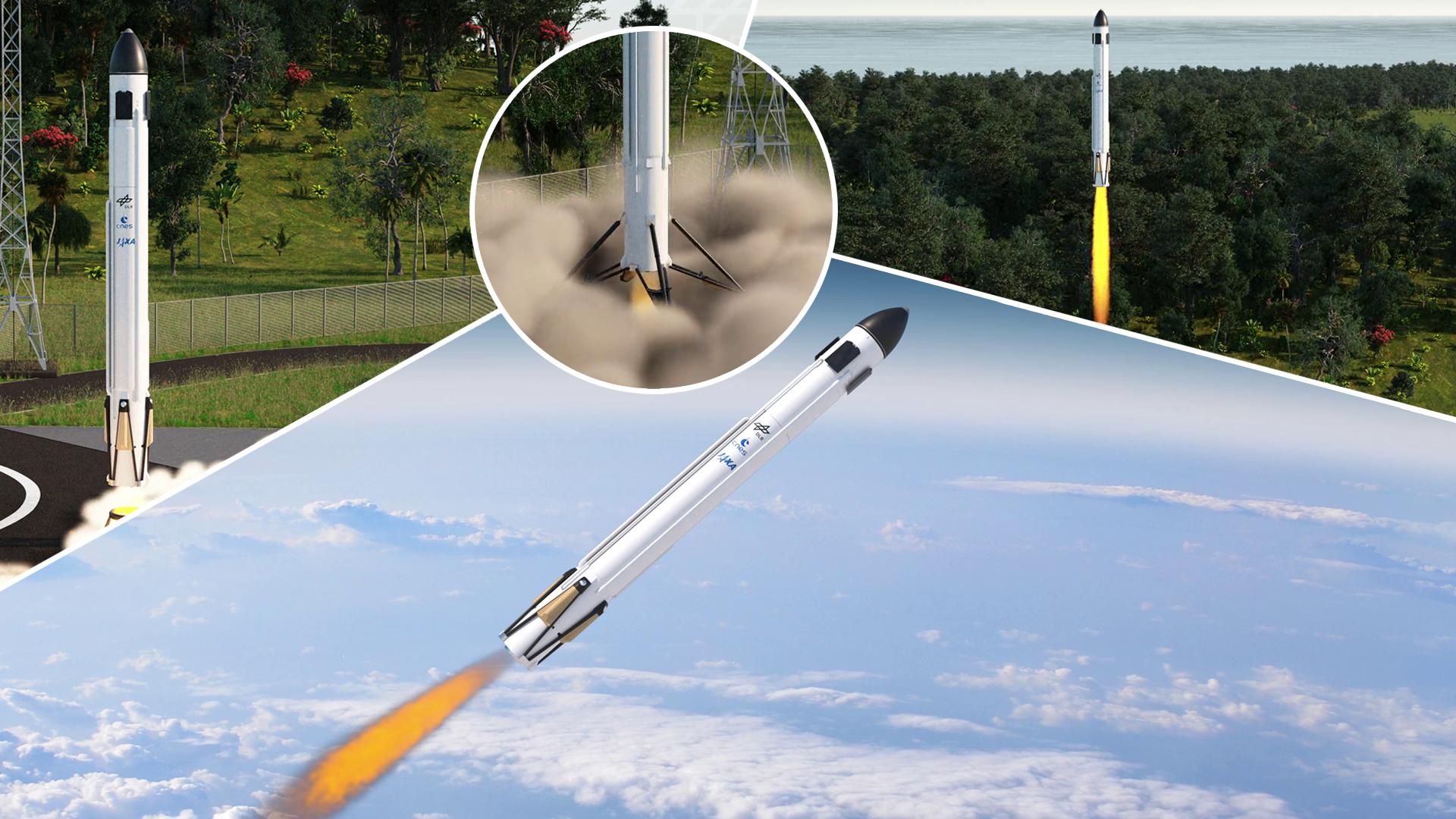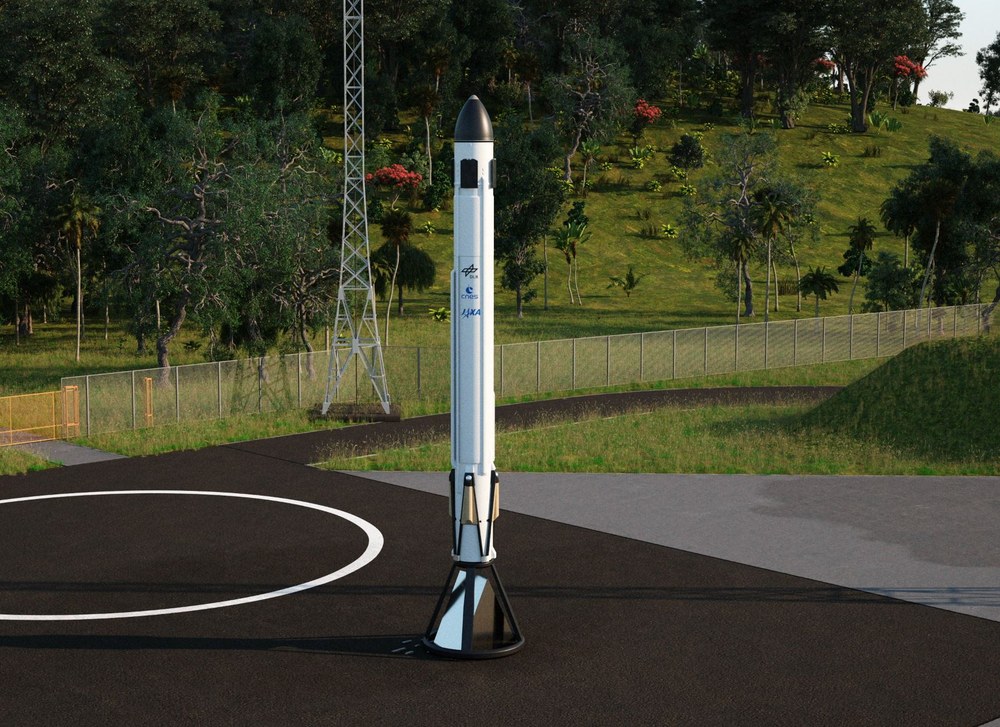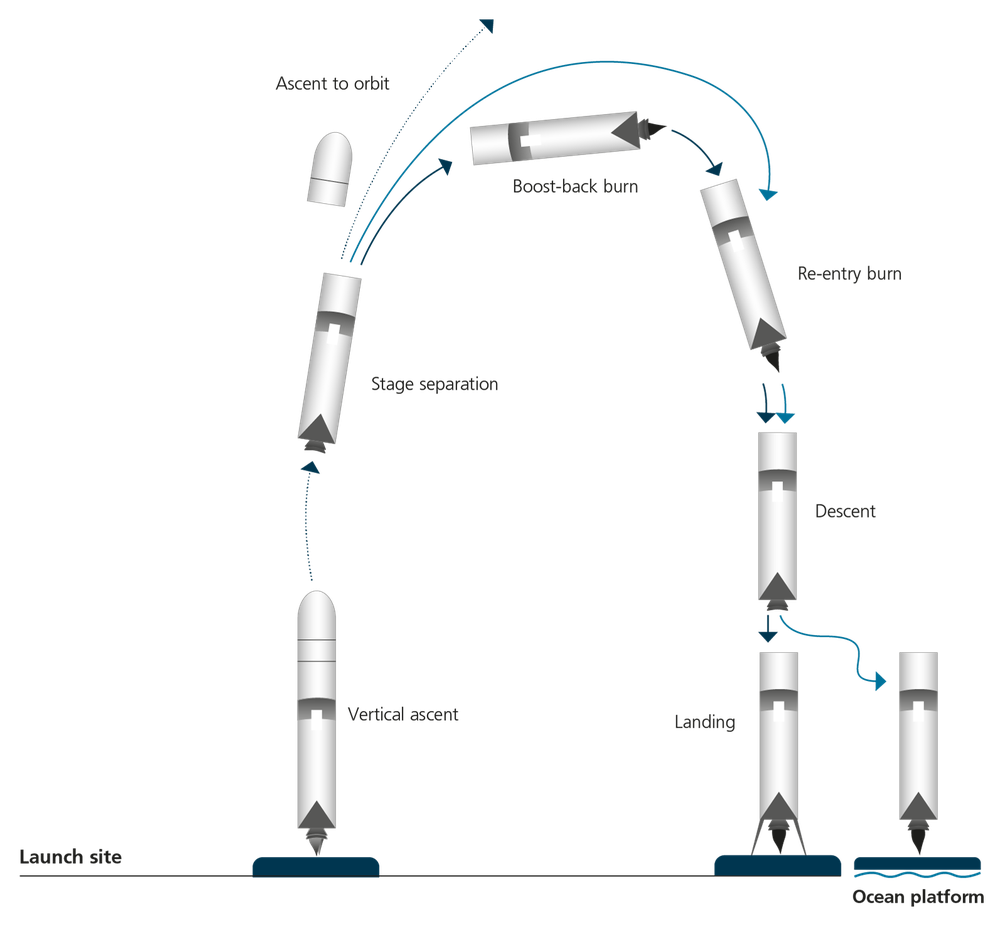From Earth to Space – and back again

Until recently, rockets have generally been single-use products. The only operational exception is the SpaceX launch vehicle, which now regularly flies into space. But this is about to change. Martin Sippel, head of the Space Launcher Systems Analysis department at the DLR Institute of Space Systems in Bremen, has spent years researching various methods for landing rockets back on Earth after their flights. In this interview, he explains how these technologies work and when the first prototypes could be launched.
At the moment, the Falcon 9 is the only reusable rocket. How does Elon Musk do it?
Elon Musk is not the first to make space vehicles reusable. The first was NASA, with its Space Shuttle programme, which involved the Shuttle returning to Cape Canaveral in Florida or to California on a horizontal landing approach. SpaceX uses a technique known as 'rocket-powered return to launch site'. In this method, the reusable stage flies back to Earth in a controlled manner using its own engines. What makes this special is that the engines are reignited both when re-entering the atmosphere and during landing.
Why was the Space Shuttle programme discontinued?
The Space Shuttle operated for over 30 years, from 1981 to 2011. The primary reason for discontinuing the programme was NASA's assessment that the safety of astronauts during re-entry was lower than with a capsule. The tragic loss of the orbiter Columbia significantly influenced this decision. Additionally, the Shuttle's maintenance costs were high, but this was more related to the organisational structure at NASA's Kennedy Space Center than to the vehicle's reusability. Furthermore, the requirements for the Space Shuttle, which could carry people in space for weeks, were of course completely different to those of an uncrewed rocket stage returning to Earth after just a few minutes.
Unlike SpaceX's rockets, which return to Earth almost vertically, the Space Shuttle landed like a conventional aeroplane. Could you please explain the difference between these technologies?
There is a visible difference: with vertical landings, the reusable vehicle looks like a conventional rocket with only small control surfaces and landing legs. In contrast, horizontal landings require sufficiently large wings, aerodynamic control surfaces, landing gear and possibly aircraft engines. The wings must also be equipped with a thermal protection system to prevent overheating during the gliding re-entry into the atmosphere. For vertically landing rockets, the stresses of re-entry are mitigated by reigniting the engines.
Is one of the techniques better than the other?
As is often the case, there is no straightforward answer to this question. A rocket that lands vertically requires significantly more propellant due to the repeated ignition of its engines during atmospheric re-entry. In contrast, a winged system does not require any fuel for deceleration, as this is achieved solely by aerodynamic forces. However, this configuration is inherently heavier due to the addition of wings. A winged system is also more complex and expensive, owing to the need for flaps and thermal protection. On the other hand, vertical landing systems require rocket engines that can be reignited multiple times during flight and must be capable of modulating their thrust over a wide range. This capability is crucial for ensuring a soft touchdown. Landing plays a significant role in the differences between these techniques.
For a vertical sea-landing, a platform must be positioned between 500 and 1500 kilometres from the coast. The logistical complexity can be reduced if the rocket flies back to the launch site, but this requires even more fuel, making it suitable only for low-performance missions and comparatively small payloads. Winged systems equipped with aircraft engines can autonomously fly back to the launch site. Alternatively, the 'in-air capturing' method developed by DLR requires a specially equipped towing aircraft to be placed in the capture zone in advance. While this method adds complexity, it makes the reusable rocket very efficient.
At DLR, we are looking at both reuse approaches. There are two notable projects: ReFEx and CALLISTO, both of which involve using flight demonstrators to explore the main challenges of each technology.

In which directions is DLR currently conducting research?
At DLR, we are looking at both reuse approaches. There are two notable projects: ReFEx (Reusability Flight Experiment) and CALLISTO (Cooperative Action Leading to Launcher Innovation in Stage Toss back Operations), both of which involve using flight demonstrators to explore the main challenges of each technology. Flight demonstrators are small prototypes of flying machines that can test the viability of new technologies and their impact on the overall system with relatively low cost and effort under real-world conditions. In the case of ReFEx, a winged glider is carried by a sounding rocket into the upper atmosphere at more than five times the speed of sound. Afterwards, the demonstrator flies the typical re-entry of a winged system. Our main focus is on aspects of overall integration and on controlled aerodynamic flight from the higher supersonics down to the subsonic range.

This is a complex task that has not yet been attempted in this form in Europe. The final integration of the systems is underway. Additionally, CALLISTO will demonstrate vertical landing. We are collaborating with the French space agency CNES and Japan's JAXA on this project. The CALLISTO demonstrator is 11 metres tall and designed to take off and land autonomously. It is equipped with control surfaces and retractable landing gear. Several tests of increasing difficulty are planned for CALLISTO. While the initial flights will lift off just a few metres Above ground, the final demonstration flight aims to reach an altitude of over ten kilometres. All flights will be performed with the same vehicle, meaning CALLISTO is already considered a small reusable rocket. The hardware is currently being built and tested.
What is your personal opinion – how will re-entry technologies develop in the future?
That is indeed the exciting question, and the answer will ultimately come from the launch vehicles, based on the latest research. One emerging trend is to combine the advantages of different re-entry methods. For instance, small wings or fins on the rocket stage can be used to exploit aerodynamic forces, significantly reducing the loads during re-entry even without a propulsion system. In this scenario, the propulsion system is only needed for touchdown, as these wings are too small for a horizontal landing.
Horizontal and vertical landing


An article by Nele Vormschlag from the DLRmagazine 176


